
Fundamentals
Hair wrapping, at its most elemental, describes the practice of encircling strands of hair with material—be it fabric, thread, or even plant fibers—to achieve a desired aesthetic, offer protection, or convey meaning. This practice, often seen as a simple act of styling, carries layers of historical resonance and cultural significance, particularly for those with textured hair. It is a method that minimizes external exposure and manipulation, acting as a shield against environmental elements and daily friction. This physical enclosure helps to preserve moisture, prevent tangling, and reduce breakage, all crucial aspects for the health and vitality of coily and curly textures.
The core concept of hair wrapping is a testament to ingenuity, born from a deep understanding of hair’s inherent needs and the desire to adorn and protect. Its utility extends beyond mere aesthetics, serving as a fundamental approach to maintaining the integrity of the hair shaft. For centuries, across various ancestral communities, this practice has been a cornerstone of hair care, adapting to different climates and cultural expressions while retaining its protective essence.
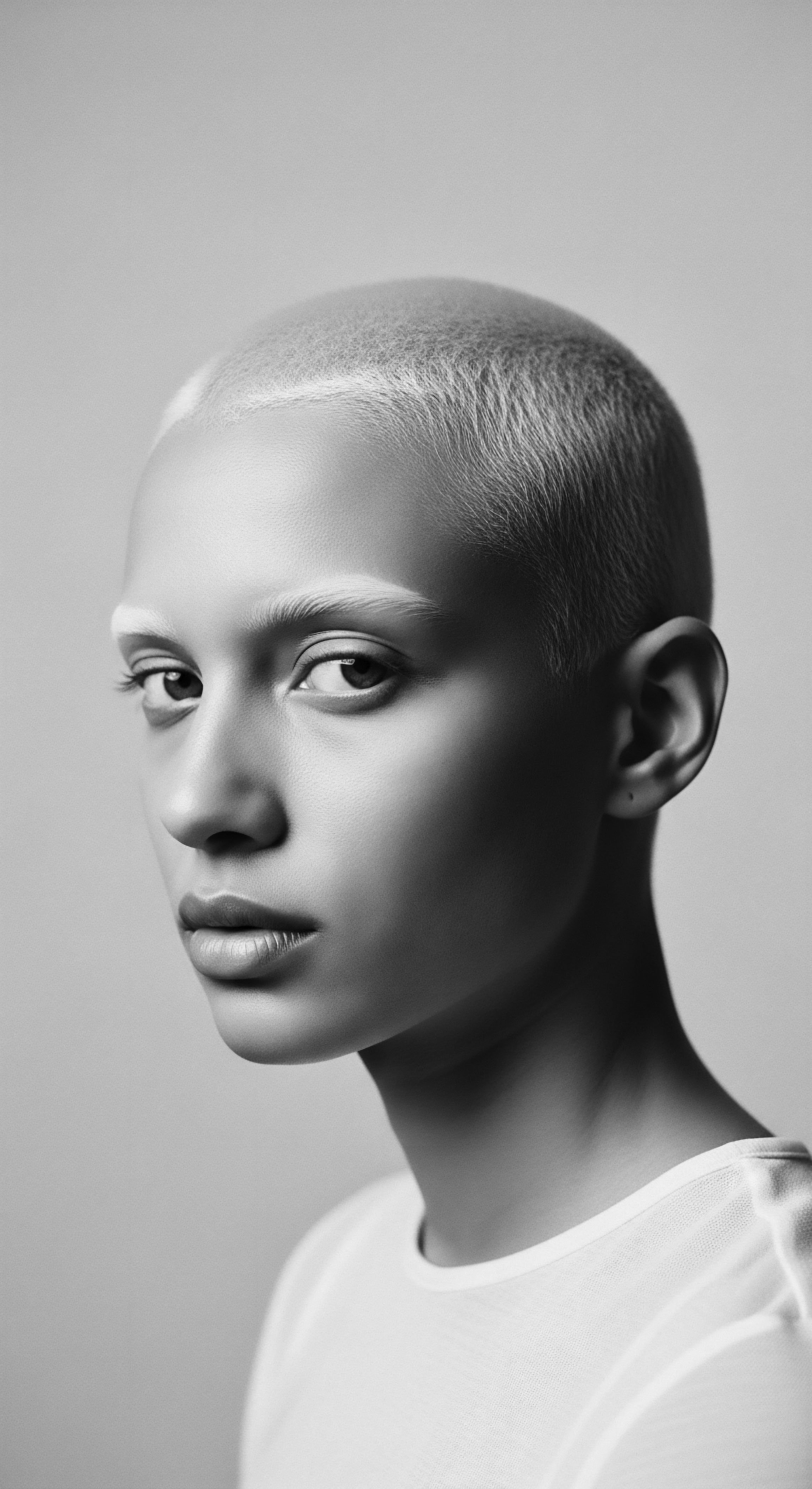
Early Manifestations of Hair Wrapping
The earliest forms of hair wrapping were often intertwined with readily available natural resources and the practicalities of daily life. Communities, particularly in ancient Africa, understood the need to safeguard their hair from harsh sun, dust, and the rigors of labor.
- Plant Fibers ❉ Early societies utilized plant fibers, grasses, and even strips of bark to bind and secure hair, offering a rudimentary yet effective form of protection and organization.
- Mud and Clay ❉ In some traditions, hair was coated with mud or clay, which, once dried, would form a protective casing, often adorned with intricate patterns or embedded with seeds and shells.
- Animal Hair/Thread ❉ Dr. Willie Morrow, a historian and author, notes that in Africa, thread and even Spanish moss or animal hair were used to wrap small braids, creating larger, structured styles for special occasions.
These foundational practices highlight the practical genesis of hair wrapping, where necessity and resourcefulness converged to create methods of care that were both functional and symbolic.
Hair wrapping, in its simplest interpretation, is the deliberate enclosure of hair strands with various materials, a practice that has historically served both protective and expressive purposes for textured hair.

The Protective Function
The inherent structure of textured hair, characterized by its coiled or curly patterns, makes it particularly susceptible to dryness and breakage if not adequately cared for. Hair wrapping provides a gentle, yet effective, barrier. It reduces the exposure of delicate hair strands to external stressors such as harsh winds, intense sunlight, and even the friction from clothing or bedding.
This minimized exposure helps to retain the hair’s natural oils, preventing moisture loss and maintaining its elasticity. Moreover, by keeping hair neatly contained, tangling and knotting are significantly reduced, which in turn lessens the mechanical stress often associated with detangling.
The act of wrapping also offers a respite from constant manipulation, which is a common cause of damage for textured hair. When hair is wrapped, it remains undisturbed for extended periods, allowing the hair follicles and strands to rest and recover. This undisturbed state is conducive to length retention, as fewer strands are lost to breakage, enabling the hair to grow to its fullest potential.

Intermediate
Moving beyond its basic physical definition, hair wrapping unfolds as a practice rich with layers of cultural significance, a vibrant lexicon of identity and resilience within the heritage of textured hair. It is not merely a method of securing strands; it is a profound declaration, a silent language spoken through fabric and form. This practice has served as a conduit for ancestral wisdom, a means of preserving cultural narratives, and a symbol of enduring beauty across generations, particularly within Black and mixed-race communities.
The deeper meaning of hair wrapping resides in its capacity to communicate social status, marital standing, tribal affiliation, and even spiritual beliefs. In many African societies, the intricacy of a headwrap, the colors chosen, or the way it was tied could convey a wealth of information about the wearer without a single word being uttered. This symbolic depth underscores the understanding that hair, and its adornment, was intrinsically linked to a person’s place within their community and their connection to the spiritual realm.

Cultural Interpretations and Historical Significance
The journey of hair wrapping from ancient African traditions to its contemporary expressions across the diaspora is a testament to its adaptability and profound meaning.
- West African Gele ❉ The elaborate Gele of Yoruba and Igbo women in Nigeria, for instance, transcends mere headwear; it is an art form, with the complexity of the wrap often indicating social standing or the significance of an occasion.
- East African Dhoop/Leso ❉ In East Africa, the Dhoop or Leso headscarves, adorned with vibrant patterns and Swahili proverbs, embody wisdom and strength, serving as a visual affirmation of cultural identity.
- The Tignon Laws ❉ A poignant historical example of hair wrapping’s dual nature as both oppression and resistance can be found in the Tignon Laws of late 18th-century Louisiana. These laws mandated that free Black women cover their hair with headwraps to signify their social status. Yet, these women, with an indomitable spirit, transformed the tignon into a fashion statement, utilizing luxurious fabrics and elaborate styles to assert their dignity and agency. This act of reclamation illustrates the profound power of hair wrapping as a tool for cultural defiance.
These examples illuminate how hair wrapping has consistently been more than a superficial styling choice; it has been a canvas for self-expression, a shield against external pressures, and a vibrant echo of ancestral heritage.
Beyond its functional aspects, hair wrapping serves as a powerful cultural statement, conveying identity, status, and a rich historical narrative within textured hair communities.
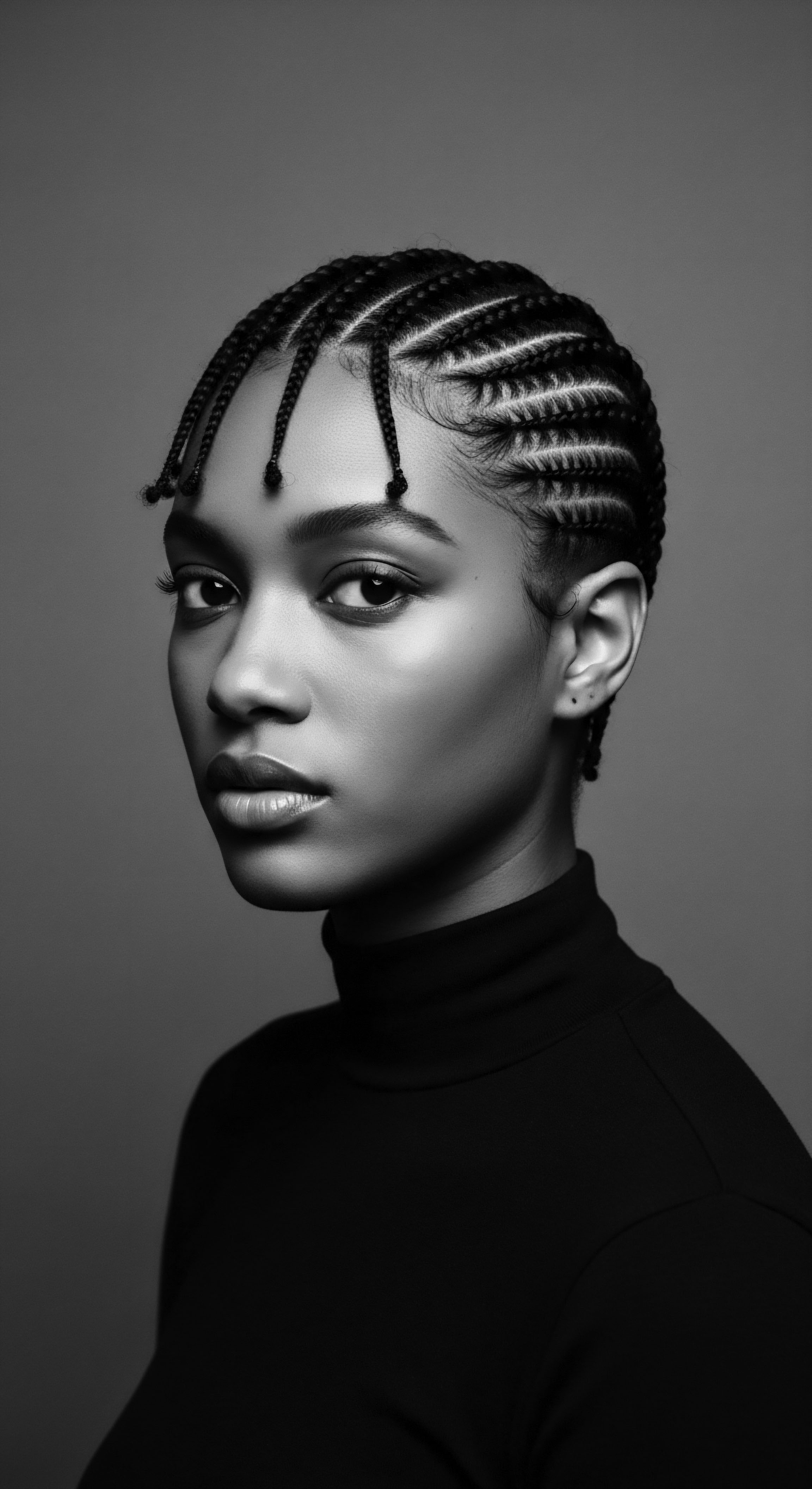
Ancestral Wisdom and Care Rituals
The understanding of hair wrapping is incomplete without acknowledging its deep roots in ancestral hair care rituals. These practices were often communal, fostering bonds and transmitting knowledge from elder to younger.
Prior to the transatlantic slave trade, hair grooming was a cherished ritual in African societies, with combs often carved by hand and presented as gifts. This era saw the application of natural oils, such as coconut oil, to hair, a practice that aligns with modern scientific understanding of moisture retention for textured hair. The meticulous care involved in preparing hair for wrapping, often including the application of natural emollients and herbs, speaks to a holistic approach to wellness where hair health was intertwined with overall well-being. Ethnobotanical studies, such as those conducted in Northeastern Ethiopia, document the traditional use of various plant species for hair and skin care, with leaves being a frequently utilized part for topical applications like shampoos and conditioners.
(Moussa et al. 2025, p. 2) This ancestral knowledge, passed down through generations, often predates and, in many instances, is validated by contemporary scientific understanding of hair biology.
The act of wrapping, therefore, is not merely about covering hair; it is about protecting it, nurturing it, and honoring the deep ancestral connections that define textured hair heritage. It is a ritual of self-care that connects the present wearer to a lineage of resilience and beauty.
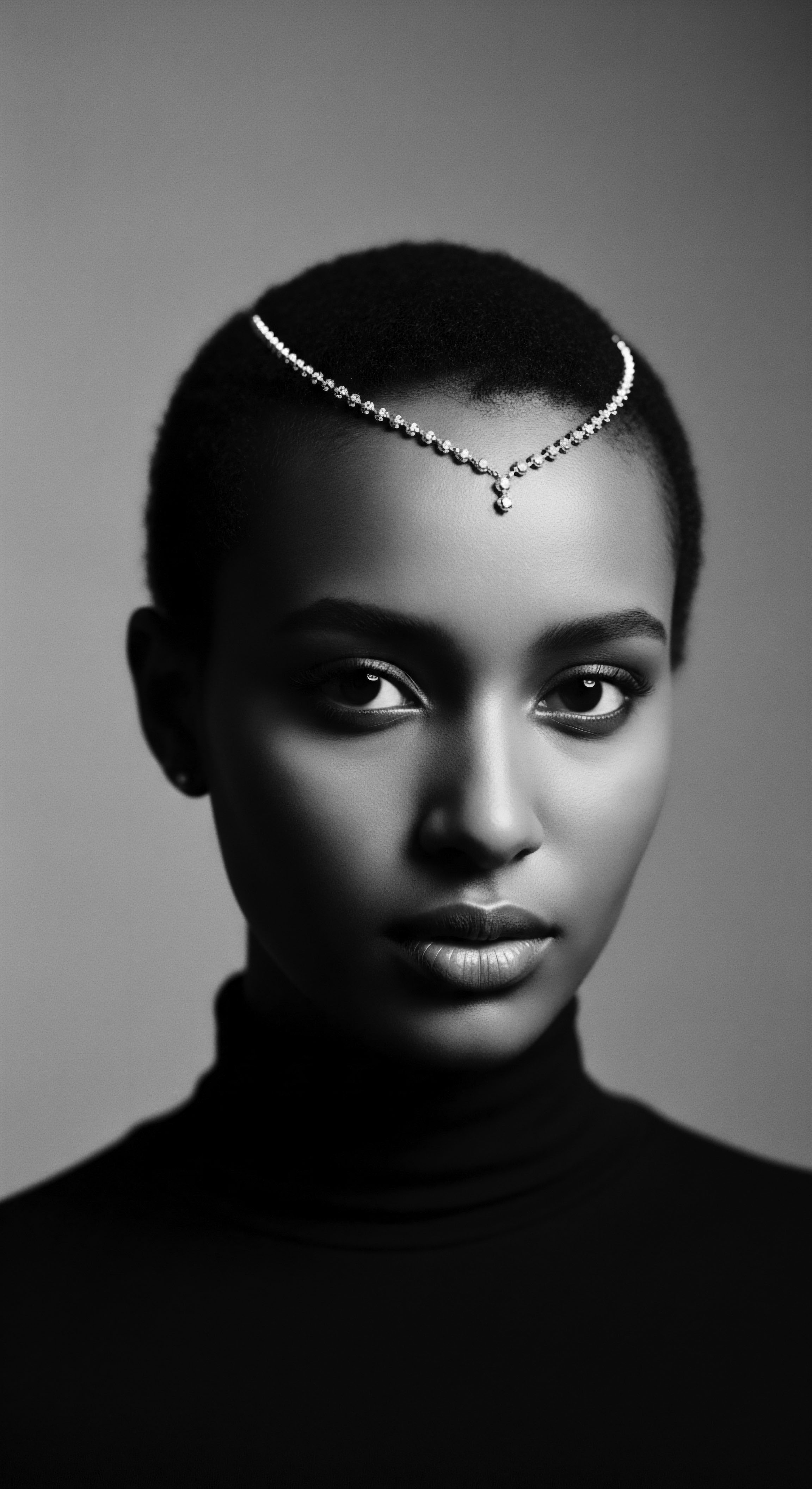
Academic
Hair wrapping, within the scholarly discourse of Roothea’s living library, represents a complex biocultural phenomenon ❉ a deliberate, often ceremonial, practice of enclosing human hair, particularly that of coily and curly textures, within various materials to modulate its biophysical state, safeguard its structural integrity, and articulate profound socio-cultural narratives. This delineation extends beyond a simplistic definition of headwear, positing hair wrapping as an enduring human adaptation to environmental pressures, a potent symbol of identity formation and resistance, and a tangible manifestation of ancestral knowledge systems regarding trichology and communal well-being. Its meaning is thus inextricably linked to the intricate interplay of epidermal biology, material science, and the rich tapestry of human ethnography, especially as it pertains to the African diaspora and Indigenous populations.
The practice’s academic significance lies in its capacity to serve as a lens through which to examine historical power dynamics, the evolution of beauty standards, and the enduring resilience of cultural practices in the face of systemic oppression. It offers a unique window into how communities, particularly those with textured hair, have historically managed, preserved, and expressed their identities through hair. The study of hair wrapping compels us to consider not only the physical transformation of hair but also the profound psychological and sociological implications of such a practice.
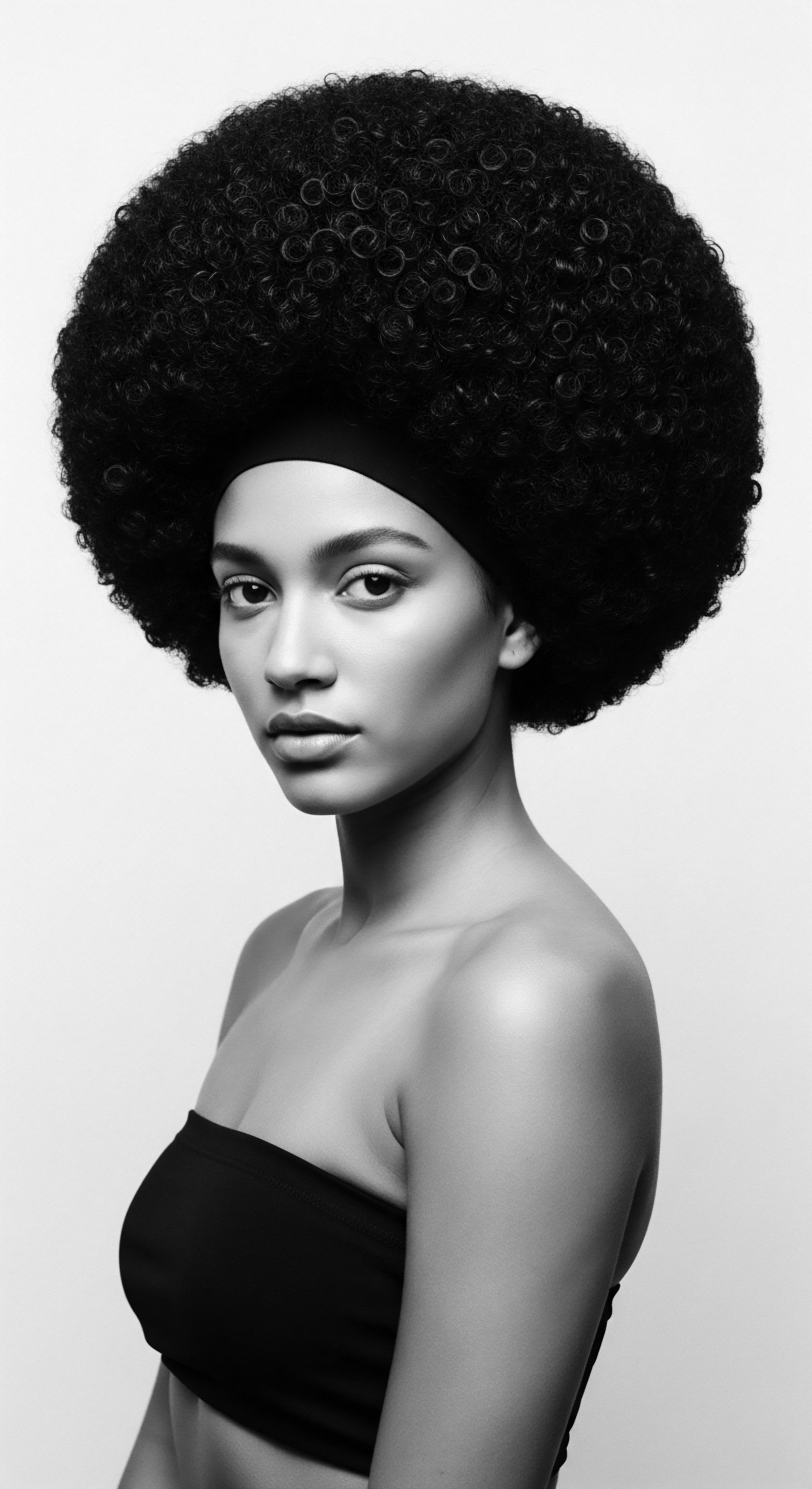
Echoes from the Source ❉ Biophysical and Environmental Adaptations
The elemental biology of textured hair, characterized by its helical structure and propensity for dryness due to the coiling pattern hindering natural sebum distribution, provides the foundational rationale for hair wrapping’s efficacy. From a scientific standpoint, wrapping hair mitigates environmental aggressors.
- Moisture Retention ❉ The enclosure created by wrapping materials, particularly those with smooth surfaces like silk or satin, minimizes the evaporation of moisture from the hair shaft, a critical factor for maintaining hydration in naturally drier hair types. This creates a microclimate around the hair, preserving its natural lipid barrier and preventing the cuticle from lifting excessively.
- Mechanical Protection ❉ Hair wrapping reduces physical abrasion and friction, which are primary causes of mechanical damage, split ends, and breakage in delicate hair strands. This is particularly relevant during sleep or strenuous activities, where contact with rough surfaces can compromise hair integrity.
- Thermal Regulation ❉ In diverse climates, wraps provide insulation against extreme temperatures, protecting hair from excessive heat damage from sun exposure or the dehydrating effects of cold, dry air.
This protective function is not a modern discovery; it is a wisdom encoded in centuries of ancestral practice. For instance, in ancient Africa, where intense sun and arid conditions prevailed, hair wrapping served as an ingenious, climate-responsive hair care solution. This foresight into hair protection, born of lived experience and keen observation, predates formal scientific inquiry yet aligns seamlessly with contemporary understanding of hair fiber health.
Academically, hair wrapping is a biocultural practice that preserves hair’s structural integrity and conveys deep socio-cultural meaning, especially for textured hair.
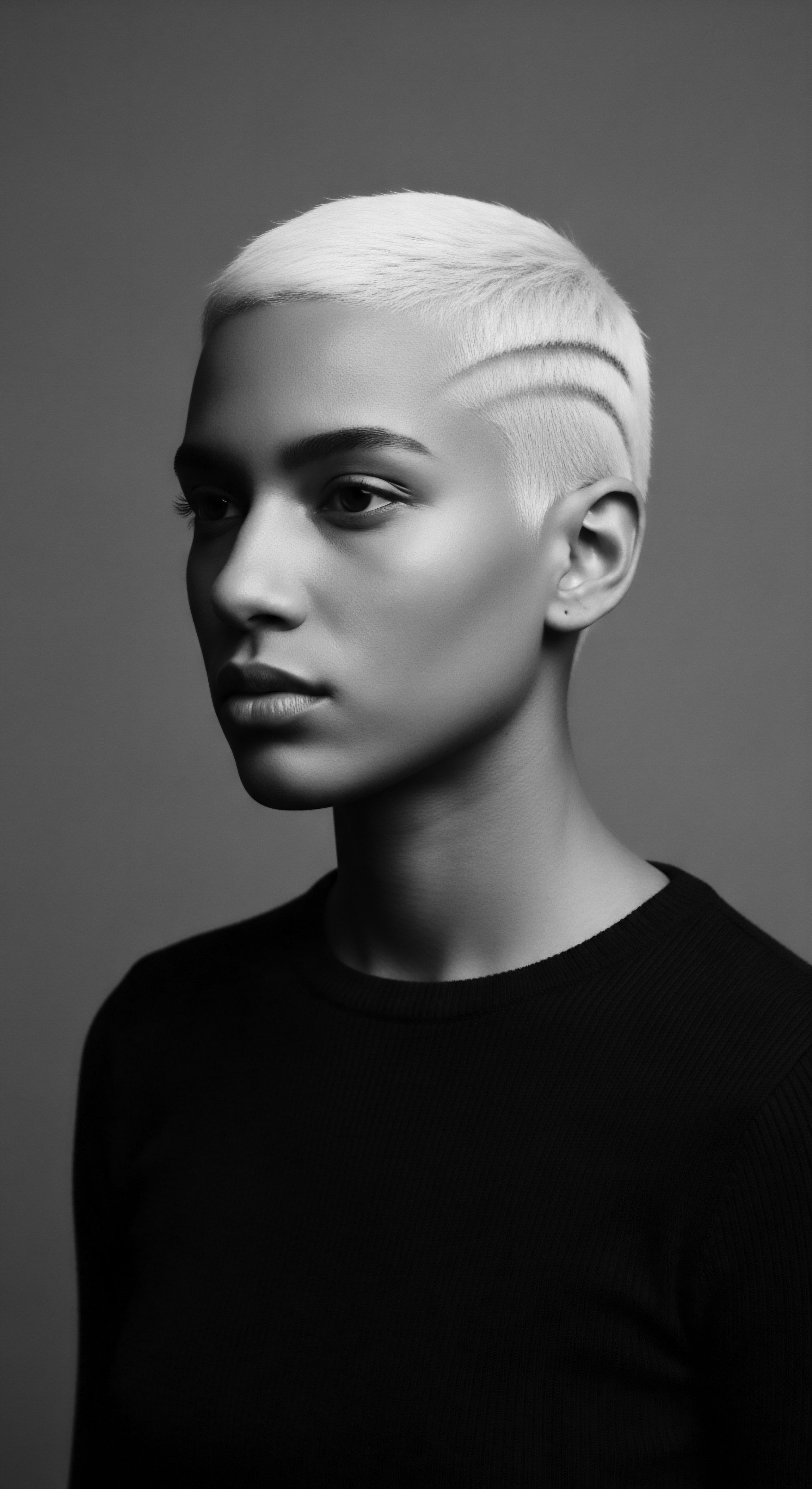
The Tender Thread ❉ Living Traditions of Care and Community
The cultural continuity of hair wrapping, particularly within Black and mixed-race communities, represents a powerful act of heritage preservation. This is not merely about aesthetic preference; it is about the transmission of embodied knowledge, the maintenance of social cohesion, and the assertion of identity in the face of historical attempts at erasure.
During the transatlantic slave trade, enslaved Africans, stripped of their material possessions and often forced to abandon traditional grooming tools, ingeniously adapted their hair care practices. As Ayana D. Byrd and Lori L. Tharps recount in Hair Story ❉ Untangling the Roots of Black Hair in America (2001), despite the absence of familiar combs and herbal ointments, enslaved individuals improvised with readily available materials like bacon grease and butter for conditioning, and even used heated butter knives as crude curling irons.
In this context, the head rag or scarf became a pervasive form of hair wrapping, initially out of necessity to manage hair that was matted and neglected, but later reclaiming its significance as a symbol of cultural resilience and defiance. This adaptation speaks to a profound understanding of hair care that transcended the absence of conventional tools, underscoring the intrinsic value placed on hair health and appearance even under the most brutal conditions.
The act of hair wrapping often occurred within communal settings, particularly among women, transforming a practical necessity into a social ritual. These gatherings became spaces for storytelling, shared wisdom, and the reinforcement of community bonds. The techniques, passed down orally and through observation, became a form of intergenerational pedagogy, ensuring the survival of distinct cultural practices. This collective engagement in hair care, from intricate braiding patterns to the art of tying a headwrap, speaks to a deep communal connection to hair as a central aspect of self and collective identity.
Moreover, the selection of materials for hair wrapping often carries specific cultural connotations. The colors, patterns, and types of fabrics chosen are rarely arbitrary; they can reflect regional affiliations, marital status, age, or even personal narratives. For example, in some West African cultures, certain patterns on headwraps are reserved for specific ceremonies or social roles, signifying a complex visual language understood by the community. This symbolic language underscores the idea that hair wrapping is a performative act, a deliberate communication of one’s identity and heritage to the world.
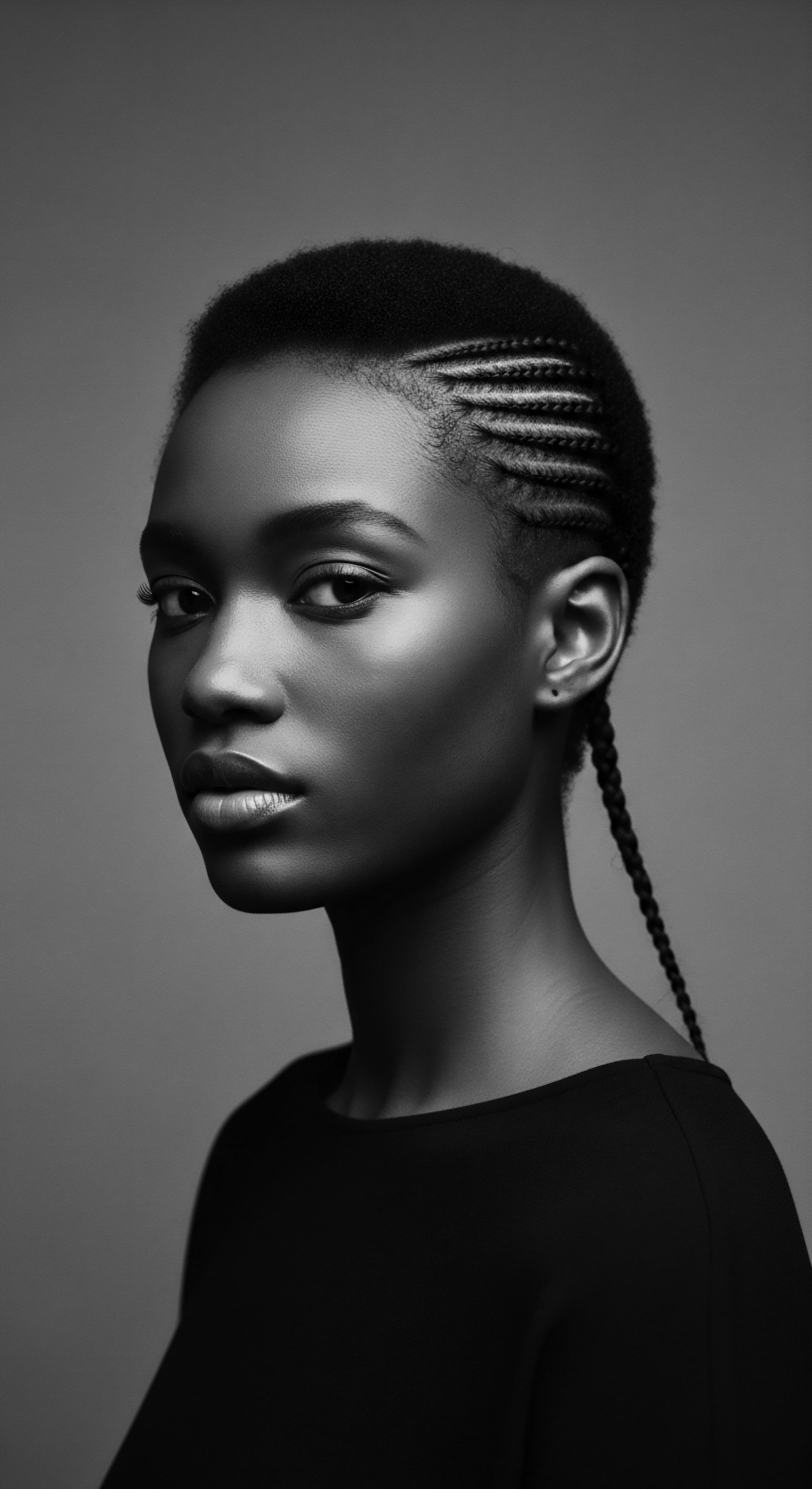
The Unbound Helix ❉ Voicing Identity and Shaping Futures
In contemporary society, hair wrapping continues to evolve as a powerful statement of identity and self-acceptance, particularly for individuals reclaiming their natural textured hair. The modern resurgence of headwraps, scarves, and other forms of hair covering is a conscious choice to honor ancestral practices while simultaneously asserting autonomy over one’s appearance. This movement aligns with broader socio-political shifts, such as the CROWN Act in the United States, which prohibits race-based hair discrimination, acknowledging the equal value of Black hairstyles.
From an academic perspective, the contemporary practice of hair wrapping serves as a powerful counter-narrative to Eurocentric beauty standards that historically denigrated textured hair. It represents a form of resistance, a refusal to conform to narrow definitions of beauty, and a celebration of indigenous aesthetics. This act of self-definition, often amplified through social media and cultural movements, contributes to a broader understanding of beauty as diverse, inclusive, and rooted in personal and ancestral heritage.
The ongoing dialogue surrounding hair wrapping also extends to its role in sustainable beauty practices. Many traditional methods emphasize the use of natural materials and minimize chemical intervention, aligning with a growing global consciousness around environmental responsibility and holistic wellness. The enduring significance of hair wrapping thus lies not only in its historical lineage but also in its continued relevance as a tool for personal expression, cultural affirmation, and a connection to a profound ancestral legacy.
| Historical Period/Context Pre-Colonial Africa (e.g. 1400s West Africa) |
| Traditional Practice & Materials Utilized plant fibers, animal hair, thread, mud, and natural oils like coconut oil for protection and elaborate styling. Styles indicated social status, age, or tribal affiliation. |
| Contemporary Relevance & Evolution Inspiration for modern protective styles and natural hair movements. Continued use of natural oils and fabrics. |
| Historical Period/Context Transatlantic Slave Trade & Post-Slavery Era (Americas) |
| Traditional Practice & Materials Head rags and scarves used out of necessity for hair management due to lack of tools and forced neglect. Later reclaimed as symbols of resistance and cultural pride. |
| Contemporary Relevance & Evolution Symbol of resilience and defiance. The Tignon Laws exemplify this reclamation. Modern headwraps carry this historical weight. |
| Historical Period/Context Civil Rights Movement & Black Power Era (USA) |
| Traditional Practice & Materials Headwraps and natural hairstyles (like the Afro) became powerful symbols of Black empowerment and a rejection of Eurocentric beauty standards. |
| Contemporary Relevance & Evolution Continued association with Black identity and pride. Used as a statement against hair discrimination. |
| Historical Period/Context Contemporary Global Diaspora |
| Traditional Practice & Materials Diverse styles, materials (silk, satin, vibrant prints) for protective styling, fashion, religious observance, and cultural expression. |
| Contemporary Relevance & Evolution Aesthetic and functional choice for textured hair. Celebrates heritage, promotes hair health, and asserts individual and collective identity. |
| Historical Period/Context The enduring practice of hair wrapping showcases a continuous dialogue between historical necessity, cultural expression, and the adaptive spirit of textured hair communities across time. |

Reflection on the Heritage of Hair Wrapping
The journey through the intricate world of hair wrapping, from its foundational definition to its profound cultural and scientific underpinnings, reveals a narrative far richer than mere aesthetics. It is a story etched in the very helix of textured hair, a testament to enduring resilience and the deep wisdom of ancestral practices. As we consider the Soul of a Strand ethos, it becomes clear that hair wrapping is not simply a technique; it is a living archive, each fold and knot holding echoes of collective memory, acts of resistance, and celebrations of identity.
The threads of heritage, passed down through generations, remind us that the care of textured hair has always been a holistic endeavor, intrinsically linked to well-being and communal belonging. The ancestral hands that once braided and wrapped hair, using natural elements and shared knowledge, laid the groundwork for contemporary understandings of hair health and protection. This legacy compels us to view our hair not just as a physical attribute, but as a sacred extension of our lineage, a connection to those who came before us.
In the gentle drape of a headwrap, or the meticulous placement of a protective covering, we find a profound continuity—a bridge spanning centuries, linking ancient African traditions to the vibrant expressions of Black and mixed-race communities today. This enduring practice serves as a powerful reminder that true beauty emanates from a place of authenticity, respect for one’s origins, and a deep appreciation for the inherited wisdom that guides our hands and nurtures our strands. The narrative of hair wrapping is, in essence, the narrative of textured hair itself ❉ resilient, adaptable, and perpetually capable of expressing profound truths.
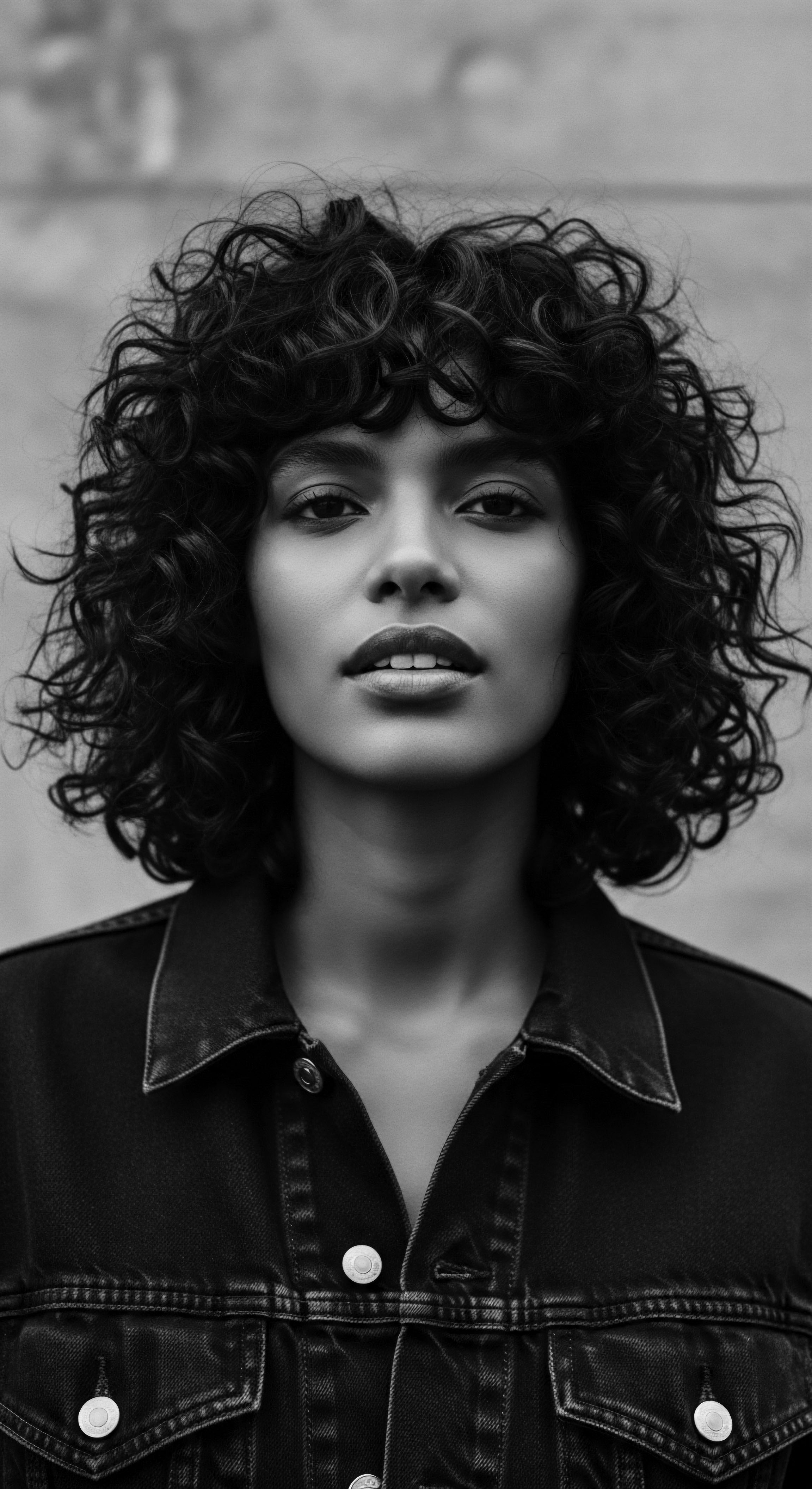
References
- Byrd, A. D. & Tharps, L. L. (2001). Hair Story ❉ Untangling the Roots of Black Hair in America. St. Martin’s Press.
- Morrow, W. L. (1973). 400 Years Without a Comb. Black Publishers of San Diego.
- Mouchane, M. Taybi, H. Gouitaa, N. & Assem, N. (2024). Ethnobotanical Survey of Medicinal Plants used in the Treatment and Care of Hair in Karia ba Mohamed (Northern Morocco). Journal of Medicinal plants and By-products, 13(1), 201-208.
- Moussa, S. B. Desta, A. F. & Abebe, T. (2025). Plants used for hair and skin health care by local communities of Afar, Northeastern Ethiopia. Ethnobotany Research and Applications .
- Nnaji, J. (2021). The “Dreaded” Colonial Legacy ❉ The History of African Hair. The Gale Review .
- Omotos, A. (2018). The Cultural Significance of African Hair. Journal of Pan African Studies, 11(7), 1-15.
- Owusu, S. (2022). The history of Black Hair. BLAM UK CIC .
- Patel, R. (2023). Strands of Inspiration ❉ Exploring Black Identities through Hair. National Museum of African American History and Culture .
- Raji, R. (2023). The History Of Black People Braiding Their Hair. Black Owned Everything .
- Tharps, L. L. (2016). The History and the Hair Story ❉ 400 Years Without a Comb at California Center for the Art, Escondido. Picked RAW Peeled .
